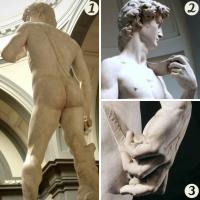Armando Reverón: 11 essential works of the Venezuelan genius
Armando Reverón is a Venezuelan painter, draftsman and sculptor born in 1889, whose legacy became so important that the MOMA dedicated a retrospective exhibition to him in 2007.
He was influenced by movements such as Impressionism, which imposed the plastic value of color on drawing, and post-impressionism, which promoted the will to differentiate styles among artists.
In addition to having given a twist to the treatment of incandescent light, the non-pictorial works of art that Reverón conceived, such as his dolls, objects, sculptures and even his own self-constructed castillete, have made him be considered a precursor of art povera, the happening and installation.

His work has been the subject of numerous studies both in Venezuela and abroad. The classification and periodization of his pictorial phases was in charge of his main biographer, Alfredo Boulton, who discovered a temporality associated with the predominant use of certain colors. He called these cycles the blue period, the white period, and the sepia period.
The art historian Juan Calzadilla added to periodization a final stage called the "expressionist period." In this the drawing returns, the gestures are accentuated and the scenes can represent from isolated figures to group figures.
Learn about Reverón's stages here and discover the essential works that marked the history of art in the first half of the 20th century in Latin America.
Blue period (1918-1924)
1. Cave

In Reverón's first stage, the influence of Post-Impressionism becomes very noticeable, as well as artists who deserved his attention during his stay in Madrid, such as Goya in his last stages. This would be one of the most emblematic figures for the painter.
In the frame Cave we can see two women, like "odalisques", reclining on a barely suggested background, reminiscent of The dressed-up maja Y The naked maja of Goya. Of course, this variant of composition in which a suggestive reclining woman can be seen corresponds to a fairly common type in the context of European art.
But something novel introduces Reverón: women do not lie on a bed or in a garden. They are in a cave. The atmosphere takes on a mysterious tone with the preponderance of a blue. This works as a suggestive veil that makes the scene transparent.
2. Figure under a uvero
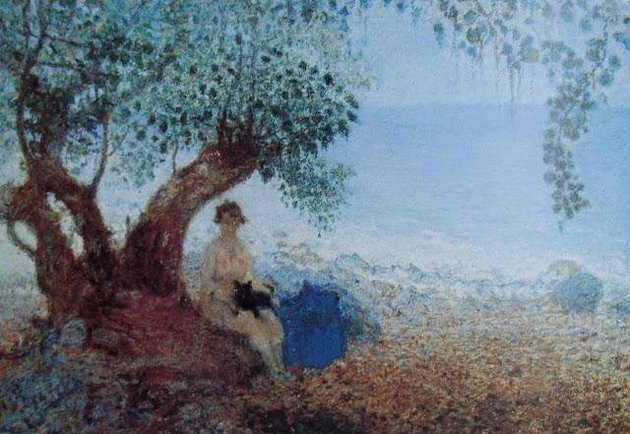
The nudes will be one of the constant themes in Reverón's work. The symbolism will be present in this work. With a still impressionistic line and with a blue atmosphere, a naked woman is represented under a grape tree. She is carrying a pet on her lap. The seascape also makes its appearance and will not leave you anymore. An aura of mystery envelops the scene.
3. Party in Caraballeda
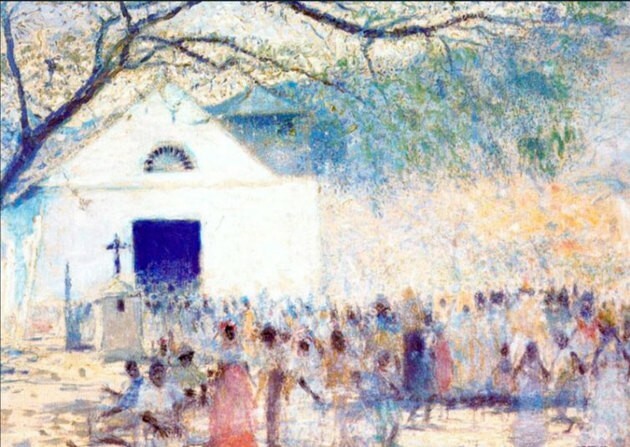
This painting represents a scene of local color. Reverón captures in it a religious celebration in the town of Caraballeda de La Guaira. Brushstrokes in spots and dots build the final image, making the paint deprive on the drawing that, as in impressionism, disappears to give space to the effects of coloring and brightness.
As you can see, little by little the dreamlike and symbolic world of odalisques and references European countries is giving space to local, common and simple life, as well as to the immediate nature that surrounds.
White period (1925-1934)
4. The ranch (The caney)
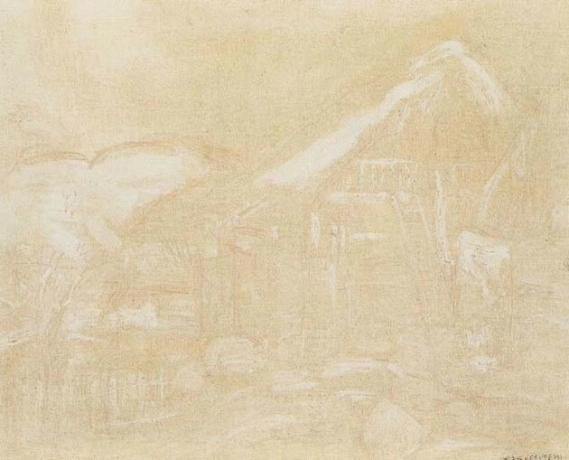
Armando Reverón Museum Collection, on loan.
The white period developed after spending time in Macuto, La Guaira, the most emblematic port city in Venezuela, where the artist will spend the rest of his life. In this period, Reverón begins to disintegrate the space and focuses only on the details that will allow building Porous and almost ethereal images based on the observation of extremely high intensity tropical light phenomena.
Before building his famous Castillete, Reverón built several "ranchos" (the name given in Venezuela to self-built temporary houses). In his land in Macuto, the painter began a life away from the city. The subject of common life and the making of utilitarian things increasingly deserved his attention.
5. Portrait of Juanita with bouquet of flowers
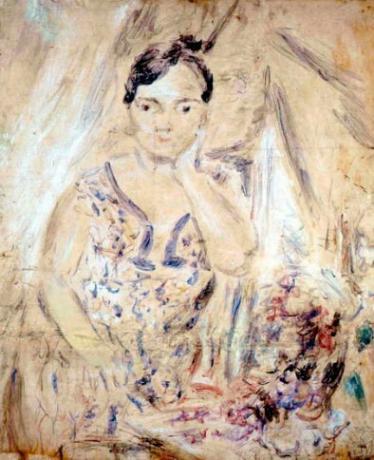
Collection of the National Art Gallery of Venezuela.
Juanita was the only woman in Reverón and with her he lived his entire life. She was her muse and her model, which is why there are many works in which the painter portrays her. In this work, Reverón opts for a thick and open line that does not allow the finitude of the figure. This is integrated in a single plane with the environment and the flowers, barely suggested by large, almost expressionist patches.
6. The ranch
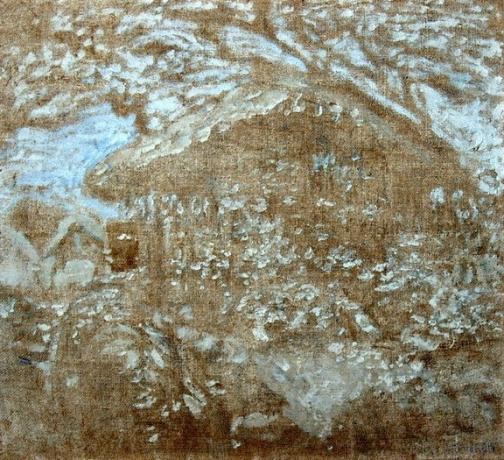
Collection of the National Art Gallery of Venezuela.
This painting is another of the representations that Reverón would make of his "ranchos". On this occasion, stripped of the details but with a strong presence of brown in the midst of a suggestive and luminous atmosphere, The ranch announces the aesthetic changes to come.
Sepia period (1935-1954)
7. Christmas with dolls

Collection of the National Art Gallery of Venezuela.
The return to the primitivist world and to everyday objects will be increasingly notorious from 1935. The painter begins to work exhaustively with the sepia color, which will set the characteristic tone of this stage. In addition, the use of new techniques and materials is introduced.
In this work, Reverón uses brown as the main coloring. Along with this, it already shows the painter's obsession with the subject of dolls that he had begun to manufacture and that now would also be reasons to be represented in his paintings to replace the Models.
8. The Playón

Collection of the National Art Gallery of Venezuela.
The marinas are still a recurring theme in Armando Reverón, but contrary to what would be a representation classical dominated by the blue of the sea, the artist builds a cloudy, mysterious and sepia seascape on the basis of tones chestnut trees.
9. Self-portrait with dolls
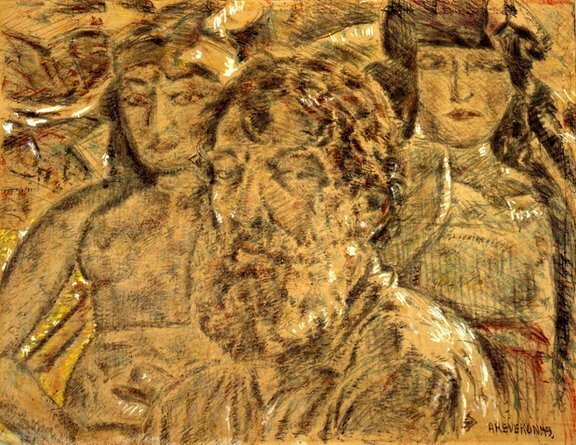
64.7 x 83.8 cm. Collection of the National Art Gallery of Venezuela.
Self-portraits have been recurring since the beginning of the painter's work. In this, however, it is striking that his dolls appear next to him, the adoration of the last years of his life. They seem to be already, for him, part of himself. In any case, they are part of the magical and mysterious world that Reverón begins to build.
Expressionist period (1945-1953)
10. May cross

Collection of the National Art Gallery of Venezuela.
The expressionist phase corresponds to the last years of his life. In this period, Reverón began to explore almost theatrical scenes and plastic elements, such as drawing, were taken up once more.
In this scene, we see the representation of the May Cross celebrations, a cultural-religious festival that is celebrated in many regions of Venezuela, especially in the coastal areas. The color palette remains focused on brown, but the lines, although irregular, reappear.
Armando Reverón's dolls
Special mention deserve the dolls scored by Armando Reverón when we have the information. Since 1935, Reverón began to worry about building utilitarian objects with his own hands, as part of a change in his life that would lead him to increasing isolation.
11. Wrist
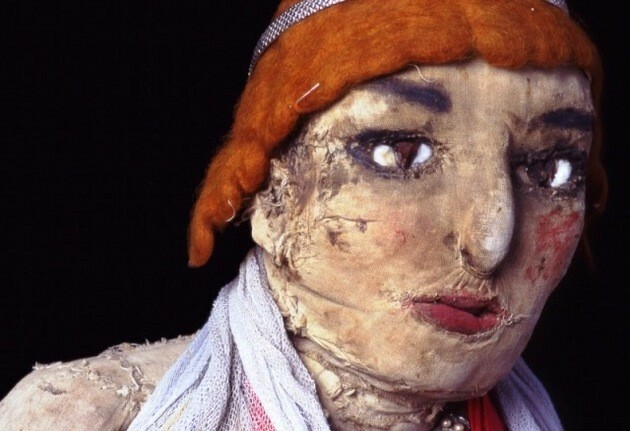
At this stage the series of The dolls, objects that he himself made and that many times served as a model for his works, as we have said previously.

About Armando Reverón
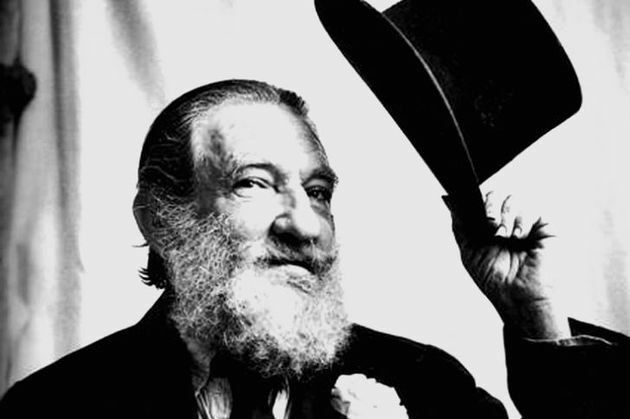
Armando Reverón was born in 1889 in the city of Caracas. He was the victim of different diseases that affected him throughout his life, including typhoid fever that he suffered at age 12 and schizophrenia in his later years, a disease whose disorders earned him the nickname of "the madman of Satchel ".
After a stay of some years in the city of Valencia, in Venezuela, he is accepted into the Academia de Bellas Artes de Caracas in 1907, where he will have as fellow artists Manuel Cabré and Rafael Monasterios, among others.
Between 1911 and 1915, he traveled to Europe and studied in the cities of Barcelona and Madrid, the latter city where he enrolled in the Royal Academy of Fine Arts of San Fernando. He finally moves to Paris, coinciding with the start of the First World War. In Paris, he knows the impressionist work and is deeply moved by it, turning his back on the avant-garde movements that were beginning to emerge.
Feeling his safety threatened in the midst of the war, he asks his family for help to return to Venezuela. She initially settles in Caracas, but will eventually move to the coastal city of La Guaira, where he will meet Juanita, her eternal life partner and her model. There he settled, managed to buy land and built the famous Castillete.
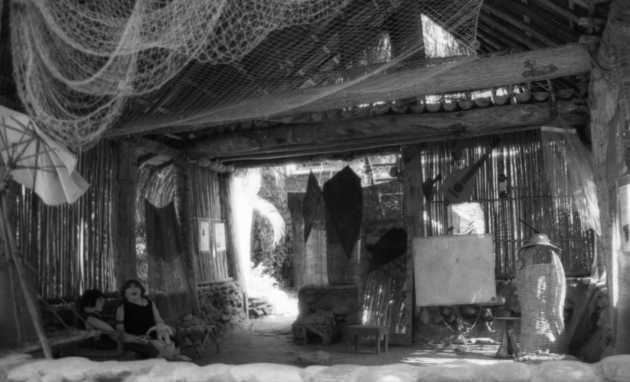
The artistic vision of him will be influenced from then on by the artists Samys Mutzner (Romania, 1884-1959), Emile Boggio (Venezuela, 1857-France, 1920) and Nicolás Ferdinandov (Russia, 1886-Curaçao, 1925), who were in Venezuela for those years. Ferninandov, whom Reverón makes a portrait of, was his personal friend.
In La Guaira he will undergo his last transformation: he turns his back on the hectic life of the city, and begins a pre-modern lifestyle that some will call "primitive." Under these conditions, he began to explore light and direct effects on the landscape, created new supports to work with, and developed novel chromatic scales.
But after observing nature, he would spend his last years taking refuge in a magical world of which his wrists are an essential and determining part.
Regarding these works and his work as a whole, the researcher Sonia Sofía Quintero would say in an article called Armando Reverón: between madness and genius what:
Armando Reverón, interested only in poetically suggesting reality, only outlines the shapes and colors, rather than in describing it in detail objective accuracy, confusing them with each other, making them vanish against the ethereal scenographic background in a weightless atmosphere of ocher haze and milky.
Armando Reverón died at the San Jorge Sanatorium in Catia, in Caracas, in 1954. His work has marked the Venezuelan visual culture and has become a Latin American reference. Therefore, it is not surprising that in 2011 the director Diego Rísquez made a film about his life and his love for Juanita. Watch the trailer in the video below:



